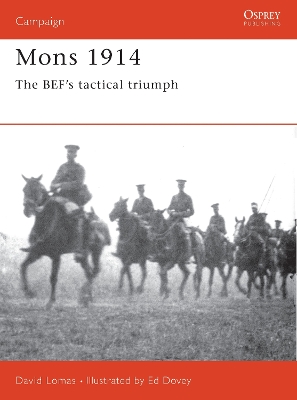Campaign
2 total works
Osprey's examination of the Battle of Mons of World War I (1914-1918). When the First World War broke out in August 1914 the Imperial German Army mistakenly assumed that the BEF - 'that contemptible little army' - would be easily defeated. They were stopped in their tracks by the numerically inferior British force, whose excellent marksmanship cost the closed packed German ranks dear. Eventually forced to fall back by overwhelming German numbers, the British carried out a masterful fighting retreat across Belgium and northern France. At Mons, nine and a half British battalions held four German divisions at bay for an entire day. This book examines not just the battle of Mons itself but also the ensuing British retreat including the actions at Le Cateau and Villers-Cotterets.
In the autumn of 1914 the original British Expeditionary Force faced a heavily reinforced German drive. Field Marshal Sir John French, the British Commander-in-Chief, had sent his men north in an attempt to take the fight into Flanders, so they could fight across open ground. History tells us that this was not to be the case. David Lomas chronicles the first of the trench-warfare battles, where lines that would remain almost static for the rest of the war were established. Although the Germans failed to reach the channel ports, the death knell had rung for the BEF, which was virtually wiped out in this brave defence.

